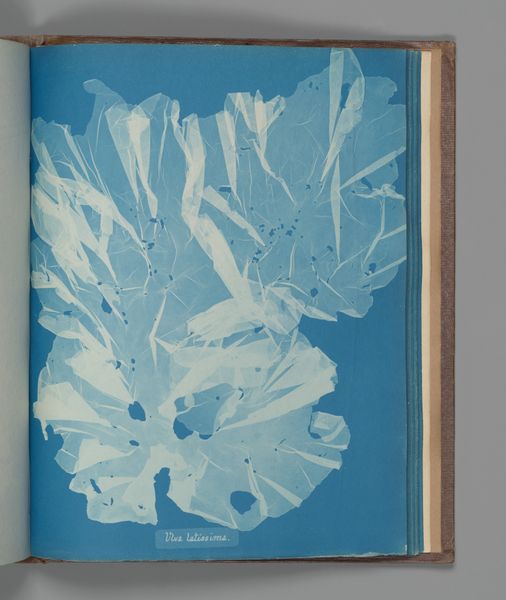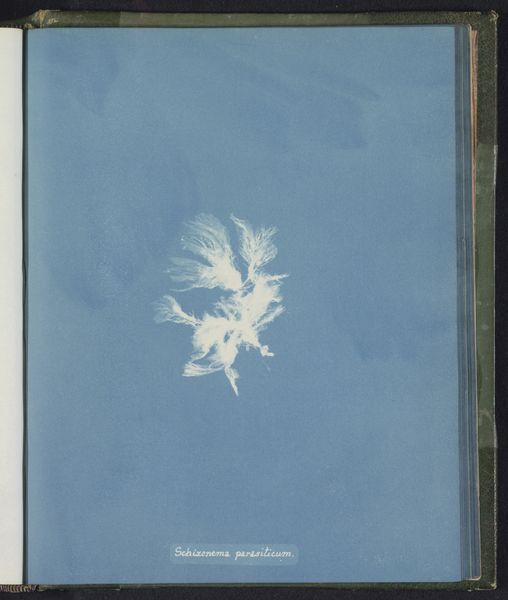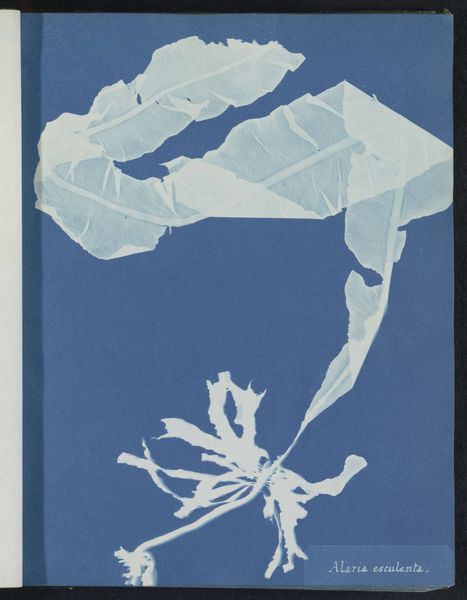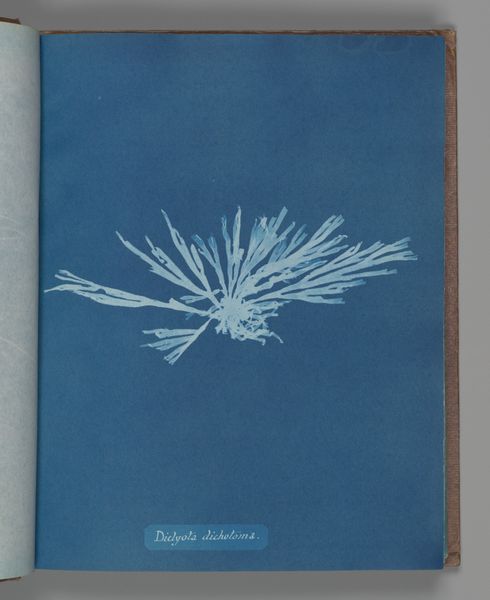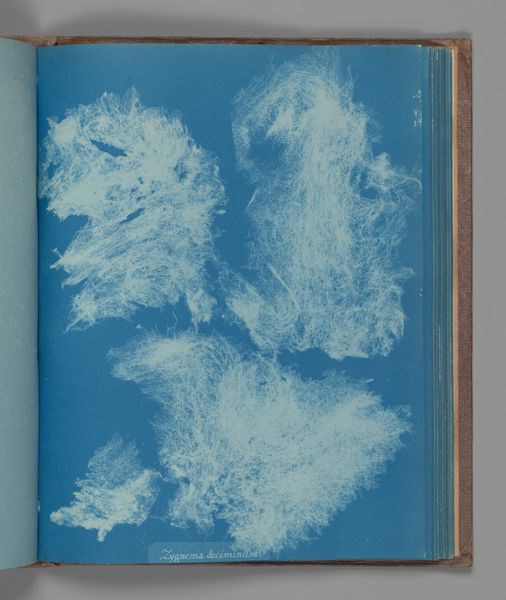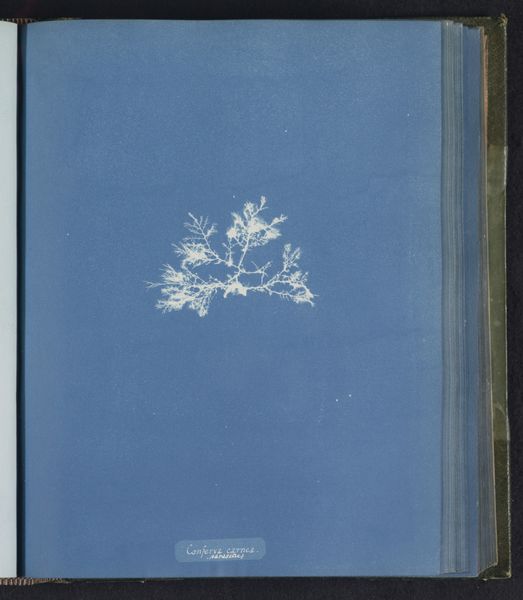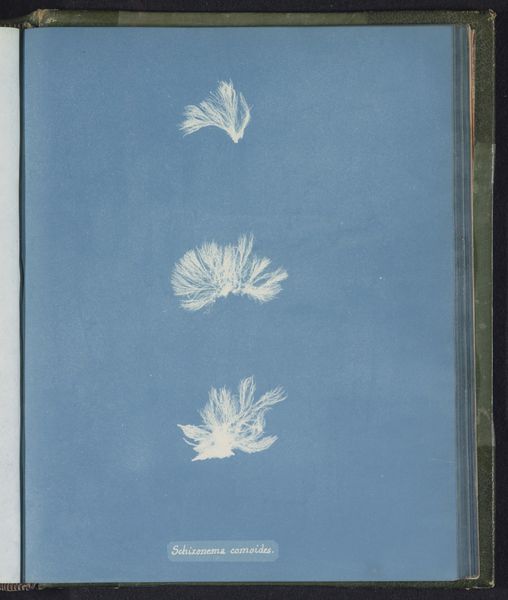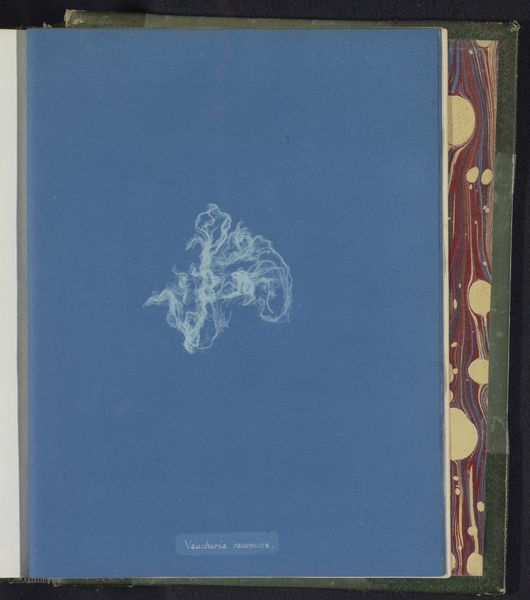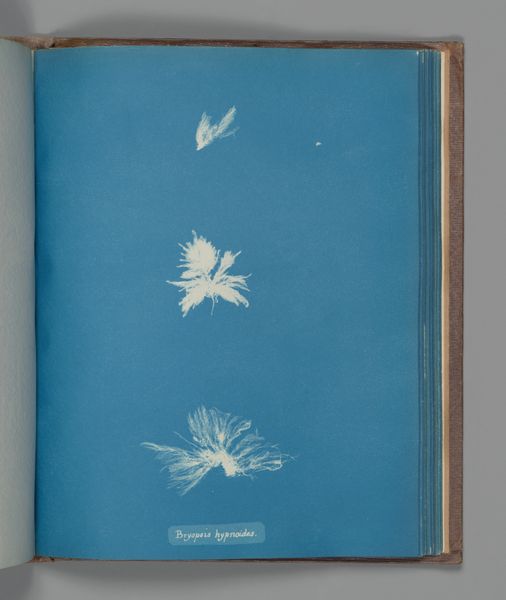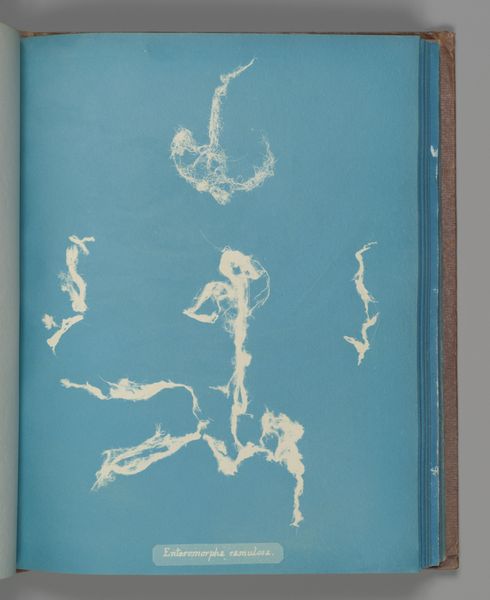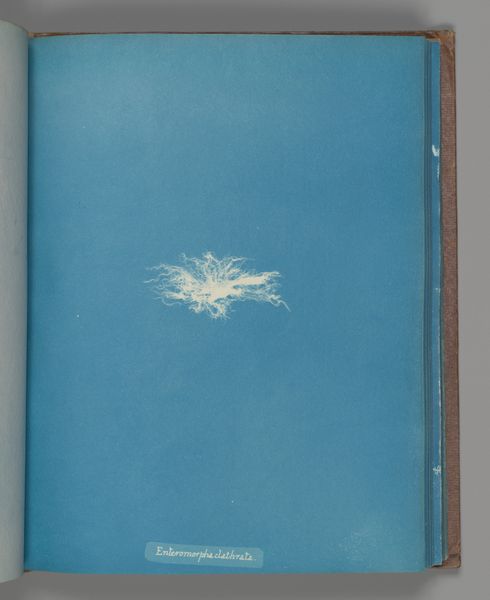
#
abstract painting
#
possibly oil pastel
#
handmade artwork painting
#
oil painting
#
tile art
#
fluid art
#
acrylic on canvas
#
spray can art
#
watercolour illustration
#
watercolor
Dimensions: height 250 mm, width 200 mm
Copyright: Rijks Museum: Open Domain
Anna Atkins made this cyanotype of Ulva latissima, a type of seaweed, in the mid-19th century using a technique she pioneered. The cyanotype process is fascinating: it involves coating paper with a light-sensitive solution, placing an object – in this case, seaweed – directly onto the paper, and exposing it to sunlight. Where the light hits, the paper turns a distinctive Prussian blue; where the object blocks the light, the original paper color remains. The resulting image is a ghostly, ethereal representation of the seaweed. It's not just a pretty picture, though. Atkins, a botanist, used this method to create a visual inventory of algae, effectively self-publishing the first book of photography. Her work blurs the lines between art, science, and craft. While photography was then a new technology, her approach was hands-on and process-driven, emphasizing the direct contact between the material and the final image. This piece stands as a reminder that even the most technical processes are rooted in human ingenuity and a maker's touch.
Comments
No comments
Be the first to comment and join the conversation on the ultimate creative platform.

